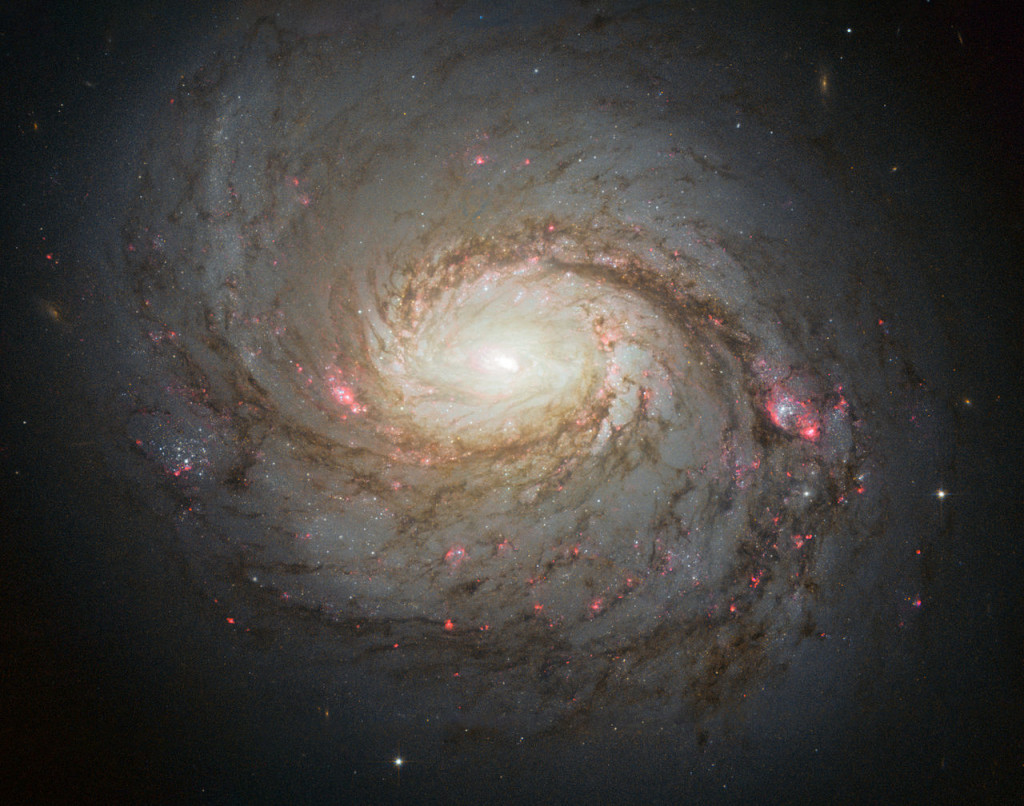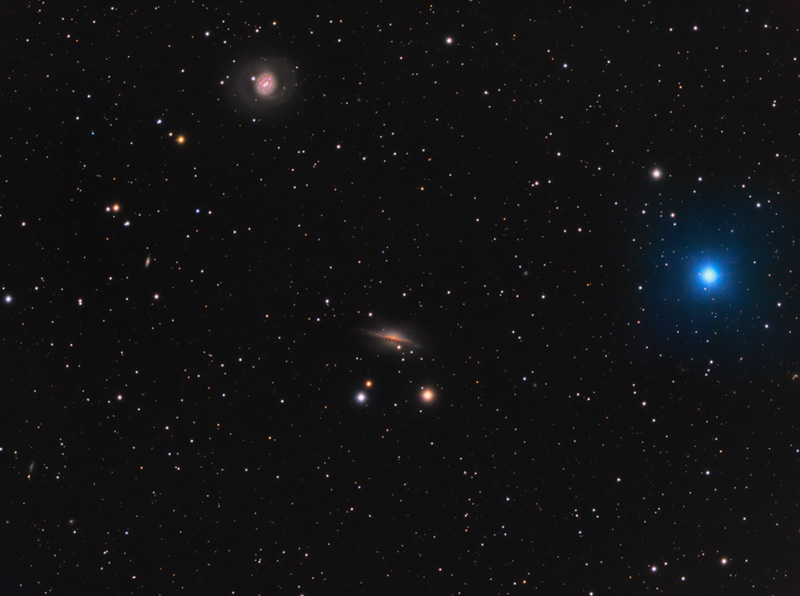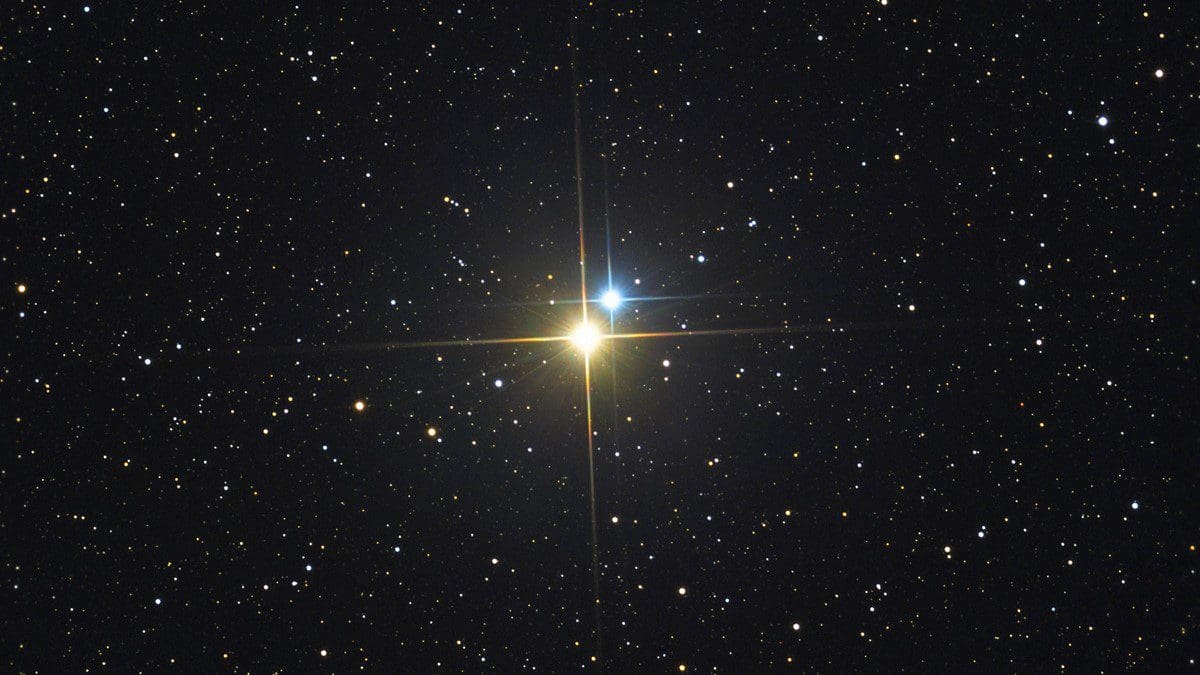johnnydeep wrote: ↑Fri Mar 15, 2024 6:39 pm
Christian G. wrote: ↑Fri Mar 15, 2024 12:19 pm
With that pair of bluish and goldish stars straight beneath it almost looks like a galaxy sitting on top of
Albireo, lovely effect!
For the context of that apt reference, see:
https://en.wikipedia.org/wiki/Albireo wrote:
Albireo /ælˈbɪrioʊ/[19] is a double star designated Beta Cygni (β Cygni, abbreviated Beta Cyg, β Cyg).
Beta Cygni is about 420 light-years (129 pc) away from the Sun.[2] When viewed with the naked eye, Albireo appears to be a single star. However, in a telescope it resolves into a double star consisting of β Cygni A (amber, apparent magnitude 3.1), and β Cygni B (blue-green, apparent magnitude 5.1).[30] Separated by 35 seconds of arc,[11] the two components provide one of the best contrasting double stars in the sky due to their different colors.
It is not known whether the two components β Cygni A and B are orbiting around each other in a physical binary system, or if they are merely an optical double.[2] If they are a physical binary, their orbital period is probably at least 100,000 years.[30] Some experts, however, support the optical double argument, based on observations that suggest different proper motions for the components, which implies that they are unrelated.[31] The primary and secondary also have different measured distances from the Hipparcos mission – 434 ± 20 light-years (133 ± 6 pc) for the primary and 401 ± 13 light-years (123 ± 4 pc) for the secondary.[9] More recently the Gaia mission has measured distances of about 330–390 light years (100–120 parsecs) for both components, but noise in the astrometric measurements for the stars means that data from Gaia's second data release is not yet sufficient to determine whether the stars are physically associated.[32]
And:
Interesting, Johnny. When I observed Albireo through a telescope, I was disappointed. I thought that the yellow primary star was pale, and the blue secondary star was also pale.
But when I observed 30 and 31 Cygni along with the 31 Cygni companion HD 192579, I was blown away. Because the yellow star, 31 Cygni, was noticeably more deeply yellow than the yellow component of Albireo. 30 Cygni was a sort of washed-out blue. But HD 192579 was absolutely intensely blue! Seeing the color contrast not between two stars, but between three stars, was incredible. It was fantastic to see the difference between a washed-out blue star, of spectral class A5, and an intensely blue star of spectral class B9, which was incredibly blue for its spectral class. (Indeed HD 192579 is incredibly blue for its spectral class, and I know it because I have checked its B-V index. HD 192579 could be a fast rotating pole on star, so that we see deep into its hot interior, which would make it extremely blue for its spectral class.) Anyway, seeing this trio was magical!
30 and 31 Cygni. HD 192579 is the blue star immediately
below orange 31 Cygni. Credit: Jerry Lodriguss.
And if you wonder about the small red star to the upper right of the letter "g" in the annotated image, I never noticed that star when I observed 30 and 31 Cygni. The red star is apparently TYC 3559-2491-1, and it is not as red as it looks. It is about the color of Arcturus.
The only star I've ever seen that blew me away with its deep red color is V Aquilae, a carbon star. It was unbelievably red!
If you check out the
Simbad Astronomical Database, you can see that V Aquilae is only 11th magnitude (11.09) in B (blue) light, but magnitude 6.90, more than four magnitudes brighter, in V (yellow-green) light. You simply never see that kind of difference in magnitude between B and V light in any "normal" red giant star, not in
Betelgeuse and not in
Antares. Not even in
mu Cephei, the famous "Garnet star". Only carbon stars are that red.
If you want to observe a carbon star for yourself, then
T Lyrae might be a better option than V Aquilae. The difference between B and V magnitudes in T Lyrae is almost five magnitudes.
Ann
 Portrait of NGC 1055
Portrait of NGC 1055










